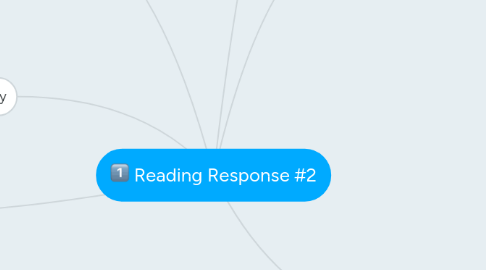
1. CHAPTER 3
2. Comprehension Instruction
2.1. Must give students strategies to effectively read. Strategies must be taught explicitly.
2.2. Teachers must practice what they preach by talking the students through what they think while they read.
2.3. Reading strategies are just like any other academic skill... They must be PRACTICED. (Guided, collaborative, and independent.)
2.4. Good readers will learn to weave strategies together, rather then just using them in isolation.
3. The Literature Community
3.1. Important Factors
3.1.1. Foster Passion & Curiosity
3.1.2. As teacher, value collaboration in all learning
3.1.3. Differentiate your instruction
3.1.4. Have every different type of text and genre in you classroom.
3.1.5. Language matters
3.1.5.1. No matter how simple, it matters to the kids how and when we use the words we do.
4. Assessment
4.1. Good assessment in comprehension is not simple handing the student a passage to read. It involves listening, observing, and having conversations with our students. All of these put together will give us a good indication of where they are at in terms of comprehension.
5. Important that we always give students time and a place for responding to their readings in a variety of ways. They will get so much out of these conversations if done purposefully.
6. CHAPTER 4
7. Explicit Instrction
7.1. Is essentially the process of thinking out loud for our students.
7.1.1. Similar to the play-dough activity we did in class.
7.1.2. Share how you are activating background knowledge and making connections.
7.1.3. Share questions while reading out loud.
7.1.4. Share inferences you are making as you go.
7.2. Reading Aloud
7.2.1. Important to make our read aloud interactive to keep students engagement up and to provide most learning opportunity.
7.2.1.1. Modeling
7.2.1.2. Share thinking w/students
7.2.1.3. Guided practice
7.2.1.4. Lift the text - allows teacher to underline and visually show reading strategies.
8. Ways to Respond to Reading
8.1. Structure for purposeful talk... it does not just happen.
8.2. Turn and Talk - quick conversations between students.
8.3. Paired reading and "book clubs"
8.4. Writing about Reading
8.4.1. Journals, notes within pages, etc.. etc..
9. Making Connections
9.1. Children will always want to make connections... Important that we make sure they are good ones.
9.1.1. How does that connection help you understand?
9.1.2. Connecting to other texts can show us that students comprehending each of the texts involved.
9.2. Once again, we must explicitly teach students how to make connections... No matter what type they are making.
9.2.1. Text to Text
9.2.2. Text to Self
9.2.3. Text to World

